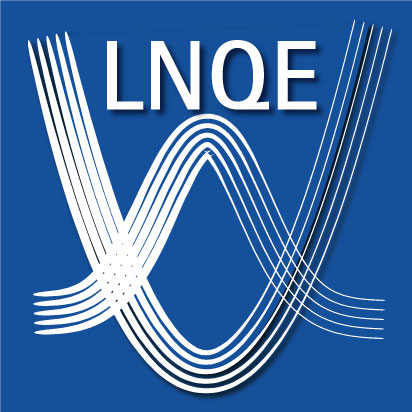LNQE-Kolloquium
Zeit: Mittwoch 10.07.2013 um 17:30 Uhr + anschließendes Get-Together
Ort: im Seminarraum + Foyer des LNQE-Forschungsbaus (Gebäude 3430), Schneiderberg 39, 30167 Hannover, Deutschland
Abstract
Colloidal nanoparticles nowadays can be fabricated in a wide range of materials, material compositions, sizes and shapes. Due to their limited extension many fascinating properties arise such as superparamagnetism, the appearance of localized surface plasmon resonances, and the size quantization effect. In order to construct functional devices with these advantageous properties, these nanoparticles can be used as building blocks. Therefore, a variety of assembly methods can be applied with respect to the desired superstructure properties.
In this talk an overview over fabrication methods and new materials will be presented with a special focus on tuning the materials nanoscopic properties. The superstructures range from microscopic colloidal supercrystals and multifunctional colloidal nanobeads [1, 2, 3] to gel structures [4, 5]. Possible applications will be discussed, as well as an outlook for present and future works.
Figuer 1. Transmission electron micrographs of (left) three colloidal supercrystals (built from 9 nm diameter superparamagnetic nanoparticles) enwrapped in a thin polymer shell [3], and (middle) a polymer nanobead of ~100 nm diameter containing arbitrarily distributed superparamagnetic nanocrystals [1]. Due to electrostatic attraction, positively charged gold nanoparticles are attached to the nanobead surface exhibiting a negative zeta potential. Scanning electron micrograph (right) of an aerogel from a binary mixture of noble metal nanoparticles [4]
[1] Bigall, N. C.; Curcio, A.; Leal, M. P.; Falqui, A.; Palumberi, D.; Di Corato, R.; Albanesi, E.; Cingolani, R.; Pellegrino, T. Adv. Mater. 2011, 23, 5645-+.
[2] Bigall, N. C.; Parak, W. J.; Dorfs, D. Nano Today 2012, 7, 282-296; Di Corato, R.; Bigall, N. C.; Ragusa, A.; Dorfs, D.; Genovese, A.; Marotta, R.; Manna, L.; Pellegrino, T. ACS Nano 2011, 5, 1109-1121.
[3] Bigall, N. C.; Wilhelm, C.; Beoutis, M.-L.; García Hernandez, M.; al., e. Chem. Mater. 2013.
[4] Bigall, N. C.; Herrmann, A.-K.; Vogel, M.; Rose, M.; Simon, P.; Carrillo-Cabrera, W.; Dorfs, D.; Kaskel, S.; Gaponik, N.; Eychmüller, A. Angew. Chem. Int. Ed. 2009, 48, 9731-9734.
[5] Bigall, N. C.; Reitzig, M.; Naumann, W.; Simon, P.; van Pee, K.-H.; Eychmueller, A. Angew. Chem. Int. Ed. 2008, 47, 7876-7879; Haertling, T.; Uhlig, T.; Seidenstuecker, A.; Bigall, N. C.; Olk, P.; Wiedwald, U.; Han, L.; Eychmueller, A.; Plettl, A.; Ziemann, P.; Eng, L. M. Appl. Phys. Lett. 2010, 96.







![[Translate to English:] Logo Zusammenland farbig](/fileadmin/_processed_/a/9/csm_zusammenland_4c_e78505eb7d.png)
![[Translate to English:] Logo Zusammenland-schwarzweiß](/fileadmin/_processed_/1/2/csm_zusammenland_sw_f06954e75c.png)